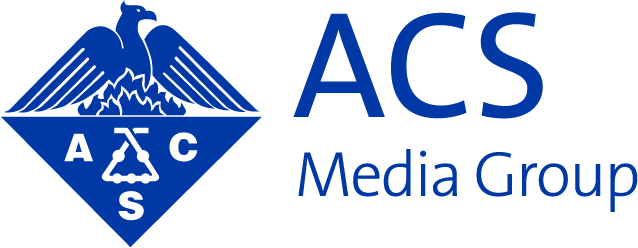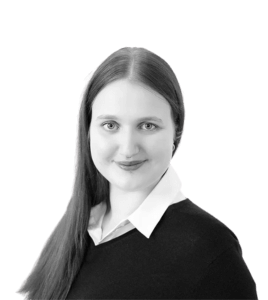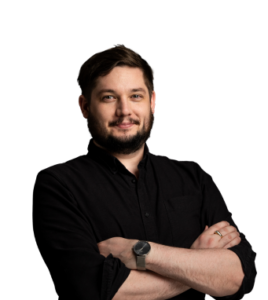In this day and age, we have access to a nearly infinite pool of content and information with just the click of a mouse or the tap of a smart phone. Whether or not this has led to shorter attention spans remains open for debate, but it is fair to say that we consume content differently.
Because there’s not just one book in front of us; we have tabs, ads, notifications and scrolling feeds all vying for our attention. It’s much easier for the reader to get distracted, and in our industry, it doesn’t matter if they have advanced degrees!
This is not news for content marketers, of course, where problems such as slow website load times, buried value propositions, and a lack of subheads and bullets can lead to massive increases in bounce rates and decreases in website traffic, user satisfaction, and conversions.
However, it would be a mistake to assume that the shorter the content is, the more satisfying and effective it will be for readers. Content marketers should challenge this general assumption and consider how both short- and long-form content can play a specific role in their brand’s content marketing strategy.
A good place to start is defining exactly what is short- and long-form content.
How Long is Long-Form Content Marketing Anyways?
First, there is no hard and fast rule about what word count distinguishes short- from long-form content. Generally short-form content can range from 500 to 1,000 words. But short-from content now goes beyond blog content to include social media posts, infographics, or e-mails. Some really successful, sharable content can be quite brief at ~300 words or less. Short-form content can also entice readers to read related or associated long-form content. Check out the STAT Newsletters, which offer short snapshots of health, medical, and biotech news and link to longer-form articles.
Long-form content marketing, by contrast, typically includes content that is over 2,000 words and can come in a variety of forms such as longer blog posts, whitepapers, e-books, case studies, and webinars. In general, these pieces are informational and educational in nature and are intended to capture audience attention for an extended period of time.
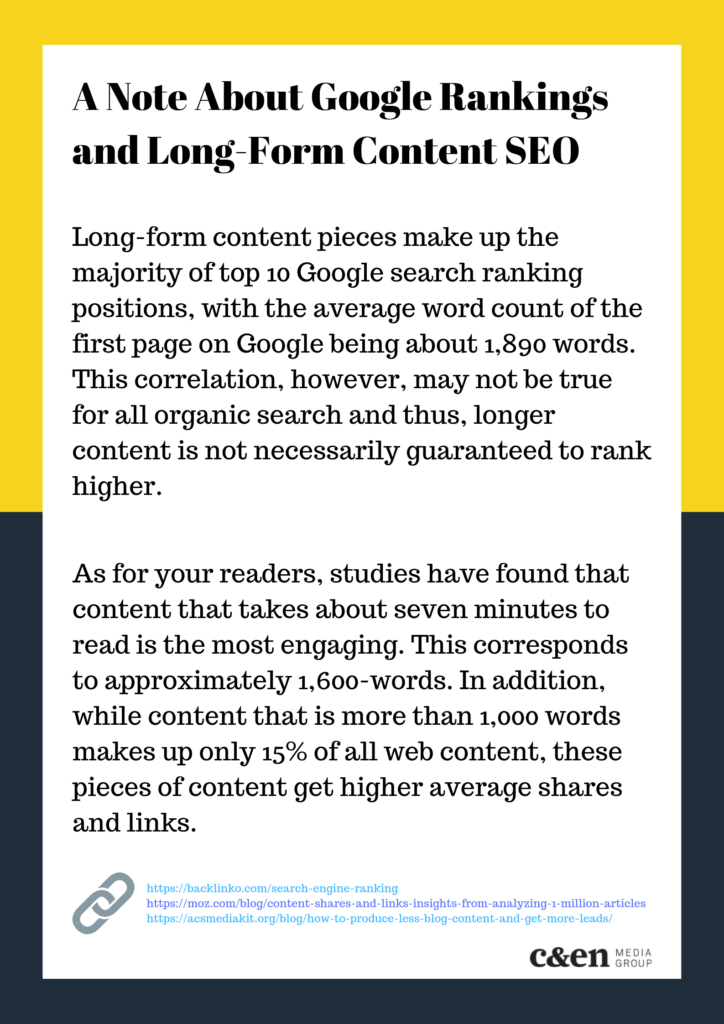
So, how do you know the right content length for your brand and audience?
Long-Form vs. Short-Form Content: Which is Right For You?
When considering the use of long-form versus short-form content in your marketing strategy, it is critical to first understand who your audience is and how your product or service fits into the competitive landscape. In essence, how much does your audience already know about you, and at what stage are the majority of them in the sales funnel? Understanding these details can help to dictate what length content you need to be writing.
Considering Your Target Audience: Short-Form Content
Short-form content typically makes the most sense for your brand if your audience:

Is familiar with your brand (i.e. they have a baseline understanding of your company). Pro-tip: Short-form content like infographics can increase brand awareness and keep you front-of-mind, but they’re not well suited to driving leads. You’ll need multiple touchpoints to form a lasting relationship and to earn your audience’s contact info.

Considers your product/service to be relatively inexpensive or well-understood. Big-ticket items or specialized services like elemental impurities testing cannot be effectively communicated through short-form content. Instead, short-form lends itself to routine, high-turnover products and services, like everyday laboratory consumables – items that can be pitched through an 80-character banner ad.

Members are already listed as qualified leads (see note above!)

Engages with your brand primarily through social media. This is because of the “state-of-mind” a user is in when they’re on their social channels. They’re scrolling through their feeds, maybe just trying to kill a few minutes, so they’re not stopping to learn about optimizing workflows for emerging contaminant analysis.
Considering Your Target Audience: Long-Form Content
Long-form content may be more appropriate when your audience:

Is considering your new, first-in-class product, how it works, and its value. Think about how much information can be included in all of those elements. You don’t need to be long-winded, but if you’re disrupting the market, or need to showcase technical details, use long-form content as your primary tool, and complement it with shorter pieces that will then lead users to your main piece of collateral.

Considers your product/service to be expensive or has a long sales cycle where they need a lot of information prior to purchase

Wants details like graphs and supporting studies (as is common for science audiences)

Finds your brand through organic search
Achieving Success with Both Content Forms
Getting attention with your short-form content requires that it be exceptional and unique. While achieving this can be difficult, quality content can help capture the attention of your audience through social media shares.
Here are some tips for drawing attention to your short-form content:
- Challenge the norm: Reject the status quo and publish novel observations; this can help generate a “buzz” about your content.
- Use eye-catching images: Avoid stock images if you can; be original and compelling.
- Keep it simple and focused: Focus on a single idea or answer a simple question.
By comparison, long-form content takes a significant investment of time to research and create, and while it can be valuable from an SEO perspective, it can also be difficult to make it compelling.
Here are some tips for drawing attention to your long-form content:
- Choose your topic wisely: You don’t want to run out of things to say in the first 1,000 words of your piece, so pick a topic that is appropriately complex for the long-form format. Luckily, for our industry, that’s not much of a problem!
- Do your research: This might seem like a silly thing to say in our field, but it doesn’t mean our industry always hits the mark. Because these pieces are meant to be informational or educational, it is important to really dig into a subject before sitting down to write. If you don’t have the time and resources in-house, consider hiring a freelancer or partnering with a service (like C&EN BrandLab) that can write and promote high quality scientific content on your behalf.
- Make it easy to read and digest: This is easier said than done with long pieces. Because the content is long, include pictures, illustrations, case studies, subheadings, call-outs, graphics, and pictures. This will help break up the text and make it easier to read.
- Pro-tip: Brainstorm how to get the most mileage out of your visuals. Can they be repurposed as an infographic, or a compelling chart to grab someone’s attention through social media?
As alluded to above, a major benefit to having valuable long-form content is that it can be gated and used for lead generation. The more evergreen the content is, the longer it can be used to fill your sales pipeline. It’s also prime for repurposing, so consider chopping it up into shorter pieces, such as a social media series that speaks to other segments of your audience.
The Long and Short of Content Marketing
Choosing to create long-form versus short-form content, like any marketing decision, requires a complete understanding of who your audience is and what questions they need answered. But what if you design a piece of short-form content and it ends up running long? It was supposed to be a quick interview or Q&A and now there’s more copy than you want to cut? Heck, this article was supposed to be half this size!
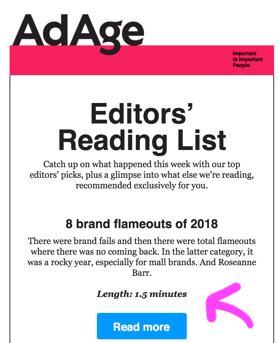
Our advice is simply to think of the reader and manage their expectations. That can be as simple as including copy or a title that says “Long Read”. We’ve even started to see publications include approximate “read times” in their article recaps, – just scroll the top of this very post for an example – and utilizing TL;DR (too long, didn’t read) summaries at the top of pages.
There are a host of plug-ins that can be used to automate this process and it can make a difference. Sometimes, the reader just needs to know how much time they’ll need to invest before they dive in. Perhaps now isn’t the time, but they’ll bookmark it for later.
The safest bet? Always check your assumptions. Follow along with the reading habits of your audience, and don’t be afraid to try new content formats or campaigns to see what resonates.
